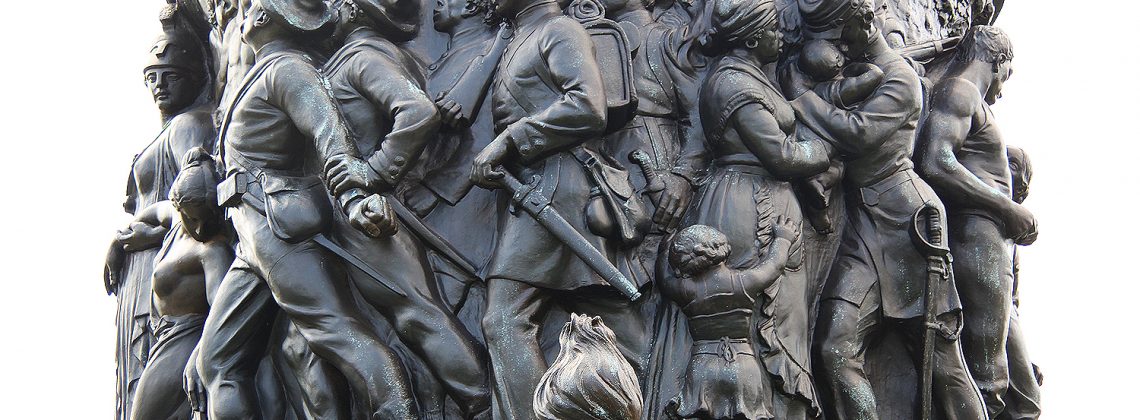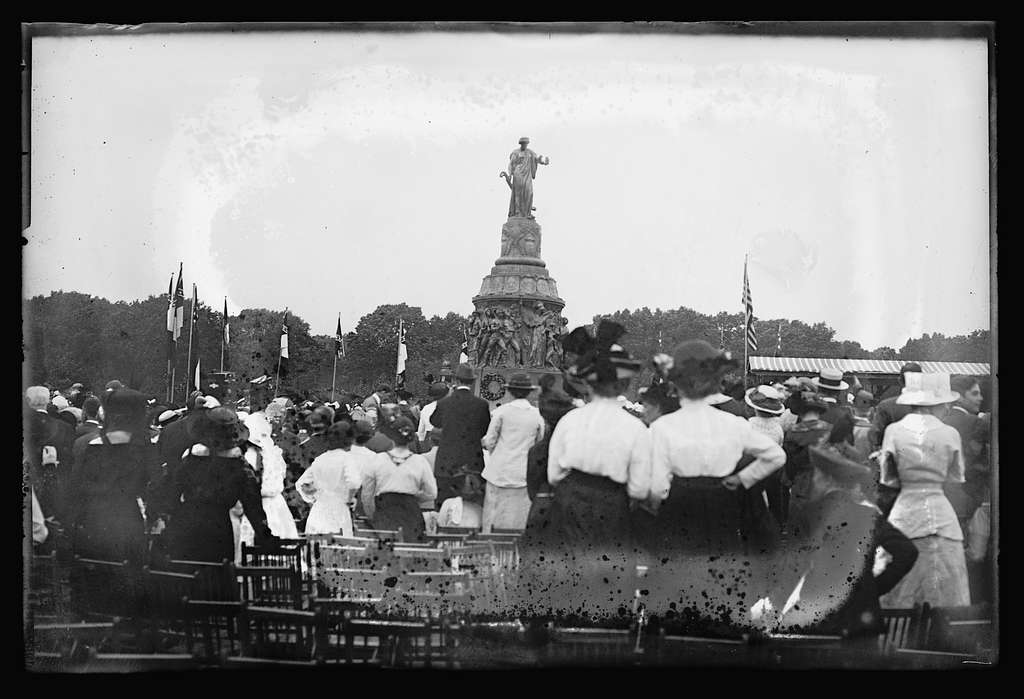

For all of our efforts to reckon with Confederate memorials, a tribute to the Lost Cause remains prominent in our most sacred of places
Today the state of Virginia will remove Robert E. Lee’s statue from Monument Avenue in Richmond. While many monuments have come down in recent months, more than 200 statues, plaques, and monuments honoring the Confederacy remain in place across the South. Removing them has been a source of political contention, and in the case of Charlottesville, a source of violence and death. What has been left out of the debate, thus far, is the presence of the Confederate monument that sits, of all places, at Arlington National Cemetery.
In its own words, Arlington Cemetery is “the nation’s most hallowed ground,” devoted to those who have made the supreme sacrifice on behalf of the nation. Yet the Confederate Memorial at Arlington celebrates armed rebels who fought against the United States. It embodies the Myth of the Lost Cause, the retrospective notion that justified the rebellion as a valiant, if doomed, effort to preserve a morally superior, paternalistic way of life in which Black human beings benefitted from their enslavement to whites.
A tall female figure, “The South,” stands atop the Confederate Memorial. Her left hand extends southward offering a laurel wreath of victory, despite the war’s actual outcome. Her right hand holds a pruning hook resting on a plowshare, invoking the Hebrew prophet’s call. Life-sized figures surround the plinth. Some are mythical, but most recognizable are stereotypical Southern figures such as “a faithful Negro body-servant following his young master,” and a “weeping black mammy” holding a white infant as its father, a Confederate soldier departing for war, kisses it farewell.
Arlington National Cemetery was established in 1864 on the grounds of Robert E. Lee’s captured plantation. Most of those originally interred there were Union soldiers, both white and Black, and the freedmen who supported them. The remains of 100 or so fallen Confederates also rested there in unmarked graves spread randomly throughout the grounds. In 1898, President William McKinley, a Union veteran, proposed, “in the spirit of Fraternity” and as “a tribute to American valor,” that the federal government should maintain the graves of all Confederate dead. Congress appropriated funds to relocate the Confederates at Arlington to their own separate section along with Confederate remains from the site of a former Civil War hospital in Washington, D.C. Today the remains of more than 400 former Confederates lie among its rolling acres.
Union graves at Arlington are laid out in straight rows, while the Confederate section is formed in concentric circles. The gravestones face inward, their backs turned on the Union graves. Each Confederate marker has a pointed top, while all others are rounded. Legend has it that the pointed tops were intended to prevent former Union soldiers from defecating on them. In truth, the designers intended simply to distinguish the Confederate graves from those of Union (especially African American) troops. The section’s original design drawings have an empty circle at the center of the plot with the placeholder word, “Memorial.” In 1910, the United Daughters of the Confederacy (UDC) received permission to erect the monument envisioned in the original plans. The UDC commissioned Sir Moses Jacob Ezekiel, an expatriate Confederate veteran living in Italy, to design and execute it.

On June 4, 1914, the anniversary of Jefferson Davis’ birth, President Woodrow Wilson, a native Virginian, dedicated the Confederate Memorial. He used the event to declare a symbolic end to the Civil War. Said Wilson: “My privilege is this, ladies and gentlemen: to declare this chapter in the history of the United States closed and ended. I bid you turn with me with your faces to the future, quickened by the memories of the past, but with nothing to do with the contests of the past, knowing, as we have shed our blood upon opposite sides, we now face and admire one another.” Of course, the “one another” Wilson referred to were his fellow white Americans.
If Arlington National Cemetery is truly the nation’s most hallowed ground, the place where we have buried our most honored dead of all races, ethnicities, and religions, it is surely incongruous to dedicate a section to those who fought against the United States—and who did so to preserve racial slavery. At a minimum, the Confederate section should be decommissioned as a United States military cemetery and decoupled from Arlington National Cemetery by a fence or some other symbolic means. Lee’s former home, standing atop the highest hill in the Cemetery, is designated the Robert E. Lee National Historic Monument. It is in truth a monument to the Myth of the Lost Cause. The building should revert to its original name: the Custis-Lee House. Renaming it will not “erase our history.” It will, rather, assure that we assign the honor of patriotic recognition to those who deserve it.
Michael Feldberg, Ph.D., is executive director of the George Washington Institute for Religious Freedom and a resident of Pittsfield, Massachusetts.